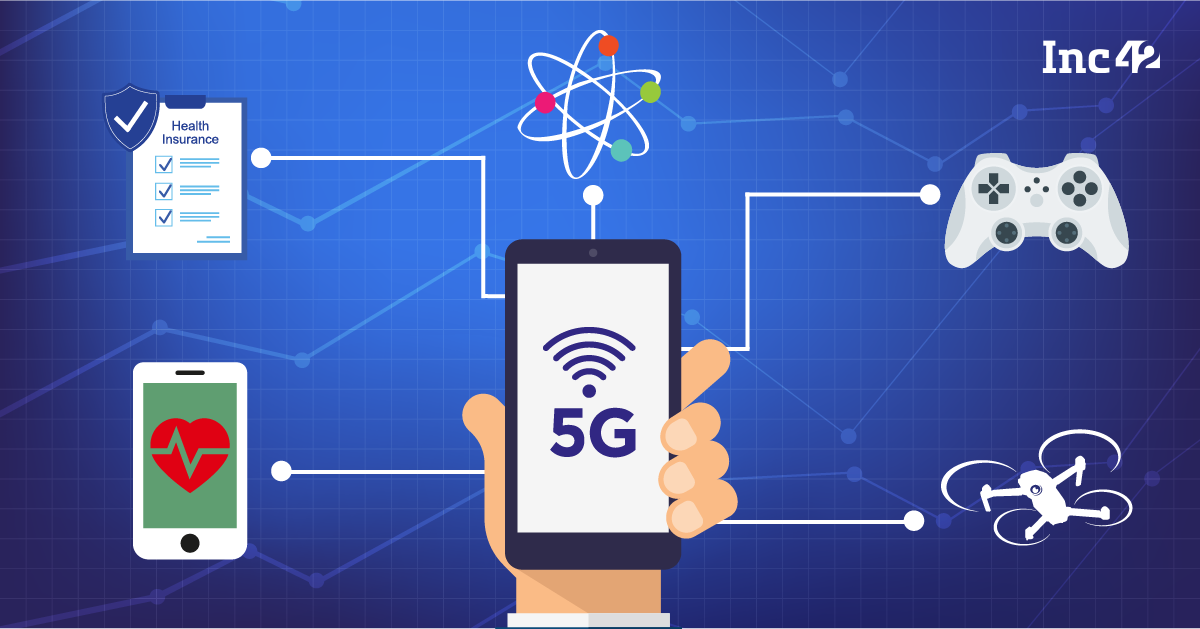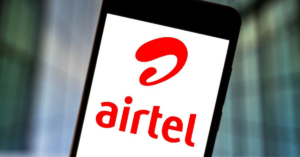PM Modi recently inaugurated a 5G testbed project and the next-gen telecom service is likely to be available in some cities of the country by the end of 2022
5G services will provide ultra-low latency and seamless connectivity, benefiting sectors like Metaverse, online gaming
5G technology will reduce the unforeseen delays in the logistics sector and also provide a boost to the government’s PM GatiShakti plan
The soon-to-be-launched 5G services are set to massively transform the industrial and manufacturing scenario in India. Ports, airports, oil & gas explorers and producers, among others, are keenly awaiting the rollout of 5G services as they embrace digitisation.
Not just large enterprises in manufacturing and infrastructure segments but startups at the other end of the spectrum are also set to derive a multitude of benefits from the next-generation telecom services.
This technology will have a profound impact on new-age companies in a host of sectors, including transport and logistics, health services, insurance, education, and financial services.
The advantages 5G services bring to the table can be broadly summarised as follows:
- Seamless connectivity will help in full use of automation
- 5G services can be of immense use for IoT applications and control of remote devices by industries. With 5G, Ericsson automates the maintenance of about 1,000 high-precision screwdrivers, according to a Deloitte study
- A 5G network will be able to react in a thousandth of a second; 5G is about 100 times faster than 4G
- While 4G networks can only support a maximum of 1,00,000 devices per square kilometre, 5G can connect up to a million devices
- Experts say a 5G network thrives in a harsh industrial setup
- High bandwidth connections enable AI-driven applications
- It allows the application of machine learning algorithms on massive data
Prime Minister Narendra Modi recently inaugurated a 5G testbed project, a DoT-funded multi-institute effort aimed at developing 5G research and startup ecosystem in India. The goal of the testbed is to develop all components of a basic 5G system from the ground up in a production-grade standards-compliant manner, and open up these components to researchers and startups in India for their use in R&D efforts.
Telecom minister Ashwini Vaishnaw had recently said that 5G spectrum pricing issues were being resolved and the auction was likely to be held in June. After the successful completion of the auction, telecom service providers such as Airtel and Jio are likely to roll out 5G services in August-September.
Let us examine how 5G can help startups restyle themselves.
5G Will Bring Metaverse A Step Closer
For new-age tech companies, 5G applications are many. Ultra-low latency of 5G networks opens up many possibilities, particularly in augmented reality (AR). Metaverse will also gain from 5G networks. The synergy between 5G and Metaverse is expected to contribute to the growth and scale of both technologies.
“Low latency and high-bandwidth connectivity are prerequisites for producing rich media content across experiential technologies like augmented reality, virtual reality and Metaverse. Thus, 5G will play a significant role in bolstering the seamless creation of new types of content,” said Shourya Agarwal, cofounder of Flam, which is building a social Metaverse network for India.
It will also be critical in facilitating edge computing, the interplay with Web 3.0 and storage, thus laying a foundation for an integrated metaverse experience.
“5G will pave the way for superior collaboration opportunities in the virtual world. It will support the systems to process increased volumes of data in real-time and with improved mobility, ensuring a high-quality 3D experience,” Agarwal noted.
Ultra-Low Latency Will Make A Great Difference To Drones
The drone sector is another vertical within the startup ecosystem where 5G will have a big impact.
“We are already making inroads…we already have built a 5G drone that is registered with the DGCA. It’s called the Evolve 5G,” said Karan Kamdar, CEO of 1 Martian Way Industries, a leading manufacturer of industrial drones.
Multiple trials are going on at present, he said, adding, “From first-hand experience, I can say it is a completely different ball game environment. As you know, 5G is about 100x faster than 4G. And the applications for drones expand significantly here.”
Kamdar said that the latency aspects will come down significantly with 5G. “On an average, we are getting somewhere in the range of 500 Mbps and 1 Gbps of speed.”
He said with 5G, surveillance to inspection to live monitoring of drones will be possible.
“We are going to be able to know exactly where the drones are, what the drones are seeing. And we will be able to monitor everything about each and every drone, whether it be the DGCA having an insight or any company or individual having access to that data,” Kamdar said.
The latency with 4G networks for video specificity is in the range of more than 30 to 40 seconds. When the latency is down to one or two seconds with 5G, it becomes instantaneous and allows real-time surveillance.
“With our industrial applications that we are doing, every company right now needs to monitor their factory, their plant, their workspaces 24/7. And if there is a delay in monitoring that, any intruder can take advantage of that. So, the latency aspect is going to be significant,” Kamdar noted.
In drone applications such as an inspection to remotely monitor water or cracks on surfaces or heat maps on solar panels, data needs to be procured instantaneously and processed in the cloud to get quick results.
So, the speed will have a major impact. And that is the difference 5G can make.
“With 5G, drones get the ability to load high-resolution data directly on the cloud as long as you have connectivity at the operating altitude of the drone,” said Ankit Mehta CEO & co-founder, ideaForge, a product-focused UAV systems company that develops drone solutions for a variety of applications.
Data analysis is done mostly on the servers at present. The majority of the applications run on Google Cloud or Amazon Web Services (AWS) which are not really reliant on 5G. Getting the data to the servers is the problem that 5G is going to solve, according to Kamdar.
A significant role is also envisaged for drones in private 5G networks. A private 5G network has the potential to be of very low latency and, therefore, direct line-of-sight communication may not be essential for drones.
“This will enable a reduction in collateral communication hardware that is presently essential for drone deployments,” noted Mehta, adding that some enterprises are already in touch with ideaForge for drone services for their proposed private 5G network.
A Different Ballgame For Online Gaming
The online gaming industry is all set for a massive technological transformation with the introduction of 5G technology for smartphones, many of which are already 5G-enabled. India is home to over 430 million mobile gamers and the number is estimated to grow to 650 million by 2025, according to the latest data from the Internet and Mobile Association of India (IAMAI).
Gamers dread latency or response delay the most while gaming. “With 5G, response time will be decreased to as low as five milliseconds, and in-game action will be smoother than before. It will also bridge the gap between the mobile gaming and mainstream gaming markets, allowing more people to join in on both competitive gaming and community-sourced gaming from more places,” said Roland Landers, CEO of All India Gaming Federation.
Future online games will require extra bandwidth, ultra-low latency and superfast throughput speeds, which makes 5G ideal for delivering cloud-based games.
“It shall also shift the storage, power consumption, and processing power away from the personal computers and into the edge cloud,” Landers noted.
Faster data transfer and quicker adoption of data-heavy and complicated features will make fantasy sports platforms work faster and more engaging.
According to the Federation of Indian Fantasy Sports (FIFS), 5G’s lower latency will better equip operators to manage the massive influx of data volume, concurrency and complexity to improve the immersive, video-enabled, real-time and multiplayer interactive sports experiences.
Lower power consumption in 5G will also enable users to get more out of the same hardware.
It will also help provide a better fantasy sports experience, including better real-time leaderboards, quicker real-time in-game performance analysis, and real-time notifications on team changes and other match updates, among others.
AR and VR integration into sports will also heighten user experience and change the way fans watch sports live as well as stream matches digitally.
Cloud-gaming, which demands excessive processing speeds and a responsive network, is another use case for fantasy sports platforms to explore with 5G.
According to FIFS, another impact area of 5G would be the accessibility of games across all platforms — console, mobile, OTT and more — with low latency, and high concurrency.
Potential To Transform Healthtech
5G services will have a far-reaching influence on the healthtech sector. It can help with better video consultations with doctors with better quality images and lower latency, making diagnosis more accurate. Unnecessary medical procedures can also be avoided as doctors on an insurer’s payroll can share a second opinion online before the patient goes for surgery.
Yash Gupta, cofounder & CTO of Nova Benefits, a one-stop employee wellness platform focused on corporate health insurance, said high-quality video consultations with doctors, remote patient monitoring and tracking, uploading health data from wearables to the cloud continuously are some 5G applications which can help healthtech companies.
“Remote surgery is an interesting area as well. However, it requires a lot of research in high precision robotics as well which might take a while to become mainstream,” he added.
Insurance Claims Can Be Fully Digitised
On the insurance front, 5G services will make handling of big data easier and can help with fully-digitised claims. Videos of evidence of loss in case of accidents, fire, etc., can be uploaded and analysed remotely without the need of visiting in person.
“Wearables which track health metrics of the insured members can help prevent serious health issues from occurring in the first place and thus lower the claimed amount while improving customer experience,” Gupta noted.
5G Will Complement PM GatiShakti
Digitisation and automation are changing the face of logistics and 5G is the next step in that direction. 5G technology will allow logistics companies to introduce functionalities. With 5G apps, companies can diagnose data in real-time, be it live driver-coaching or dynamic rerouting of vehicles based on real-time shipment data and weather conditions.
It will also allow companies to get insights into driver behaviour, route efficiency and fuel efficiency.
“With smart sensors and onboard computers that monitor and transmit position, speed, fuel consumption, truck wear, the operational efficiency of a logistics company can be significantly improved while the risk of costly accidents can be mitigated,” said Devesh Gangal, country marketing manager, Borzo.
Founded by serial entrepreneur Mike Alexandrovski, Borzo uses advanced algorithms to enable affordable, fast and precise delivery for the mass market.
Dhruvil Sanghvi, founder & CEO of LogiNext, said with 5G comes greater bandwidth for autonomous things to operate.
“Smart cameras and videos, machine learning and analytics for warehouse management, inventory management, delivery tracking in real-time are some of the applications of 5G in logistics,” Sanghvi said.
Quoting Accenture estimates, Gangal said that transport and logistics (T&L) organisations will experience 20–30% productivity gains after pairing use-cases like automation, robotics, and connected workers with 5G and other enabling technologies
For end-consumer, the wide adoption of the 5G technology would mean fewer unforeseen delays that can negatively impact delivery times.
The integrated nature of the PM GatiShakti National Master Plan (PMGS-NMP) will complement the rollout of 5G technology by creating a digitised economy through a centralised portal. The logistics sector will benefit through better planning of infrastructure corridors, last-mile connectivity and faster internet.
The GatiShakti project is an ambitious effort to create a digital platform to bring 16 ministries on one platform for integrated planning and coordinated implementation of infrastructure connectivity projects. For this to happen, connectivity is crucial and this is where 5G will be a big support, Sanghvi said.










